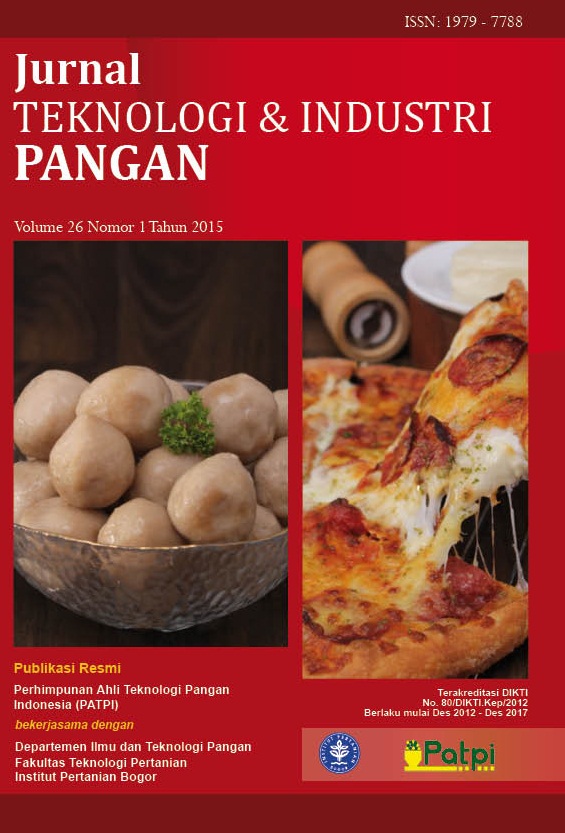KAJIAN WAKTU PERENDAMAN “MARINATION” TERHADAP MUTU DENDENG SAPI TRADISIONAL SIAP MAKAN
Abstract
Generally, marination time at home industry of dried meat “jerky” in NTB province was conducted up to 18 hours at room temperature, which promote the growth of foodborne pathogen. This research was aimed to determine the effective and efficient marination time to produce a good quality of jerky. A previous study showed that 2.5% of liquid smoke Grade 1 was recommended to be used in traditional jerky processing. Therefore, the concentration was used for marination of sliced meat in traditional spices for 0, 3, 6, 9, 12, 15 and 18 hours at room temperature. Data analyses were conducted using ANOVA. The results indicated that marination time has significant effect on the chemical qualities (water, protein content and pH), however no significant effect was observed on the ash content. In addition, a hedonic test exhibited that marination time influenced the color, taste and flavor of the traditional jerky. However, it had no effect on the jerky’s texture. Direct plating analyses indicated that marination time influenced the number of total microbes (<1.0 x 102 (CFU/gram), coliform and molds (<1.0 x 101 CFU/gram). In conclusion, the best traditional jerky quality was resulted from 3 hours of marination. The jerky had 11.77% of water content; 4.66% of ash; 48, 54% of protein and pH of 5.5. In general, 3 hours marination time exhibited a good acceptance on the parameter of SNI 01-2908-1992, i.e. color (black towards brownish), texture (biteable) and flavor (smoky flavor/barbeque) as well as, safe for consumption.
Authors

This work is licensed under a Creative Commons Attribution-NonCommercial 4.0 International License.

